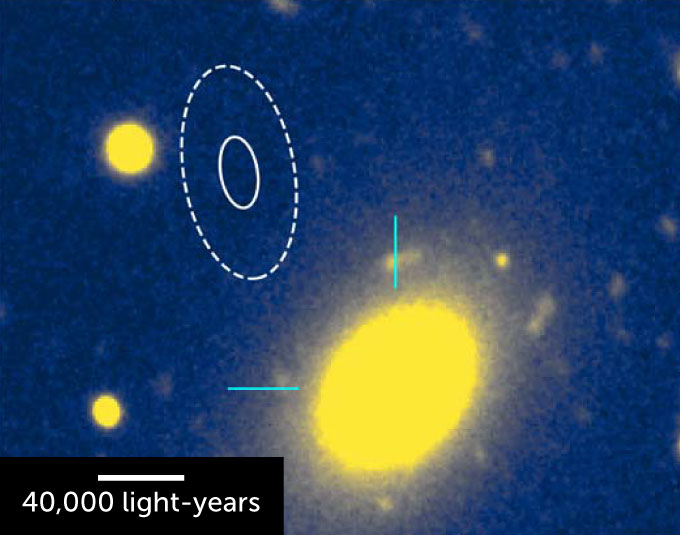A staccato explosion of electromagnetic energy is first followed in an old, dead galaxy. The discovery supports the idea that there are more ways to produce such flames, called rapid radio explosions, as it was originally thought.
Rapid radio, or FRB distributions, are long explosions of milliseconds of intense radio waves. Astronomers have noticed thousands of these explosions, but only about 100 have been tracked in their origin, says astronomer terraneh Eftekhar of the Northwestern University in Evanston, Ill. Almost everyone came from live neighborhoods full of new stars.
From February to July 2024, the Radio Chime Telescope group in Canada discovered 22 explosions from a FRB called FRB 20240209a. Six of those explosions were also discovered nearly 70 kilometers away on a Chime auxiliary telescope called k’niʔatn k’l◡stk’masqt, which means “a hearing device for the outer space” in the language of the upper Similkameen .
The combination of these signals let eftekhari and colleagues trick the location of the frb in the sky. In addition, it came from the outskirts of an ancient galaxy, about 11 billion years old, the years of formation of stars are very long after it, the team reported on two letters on February 1. Astrophysical journal letters.

Astronomers think that FRB comes mainly from magnetized stellar corpses called magnets, which are residues of supernova explosions. Such supernova are expected when many stars are actively forming – not in an old galaxy, and certainly not so far from the center of the Galaxy.
“Galaxy itself is a dead galaxy,” says co -author Vishwangi Shah, an astronomer at McGill University in Montreal. “So the question is: How are such energy signals produced from such a region of space?”
Another strange frb can offer a data. In 2021, astronomers found a FRB emanating from a globular group, a narrow ball of mostly old stars in a relatively close galaxy. That explosion inspired astronomers to think how old or dead stars can form magnets. Perhaps the magnets come from the white dwarfs falling under their gravity, for example, or outside the waste of two neutron stars colliding.
The team has applied for observations with the James Webb spatial telescope to see if there is a globular group in the country from which the new FRB has come.
“I think magnets are still an original convincing story for FRB,” Eftekhari says. “But I think what this discovery is telling us is that there are probably many ways you can form magnets that produce FRB.”
#rapid #radio #explosion #dead #Galaxy #Enigma #astronomers
Image Source : www.sciencenews.org